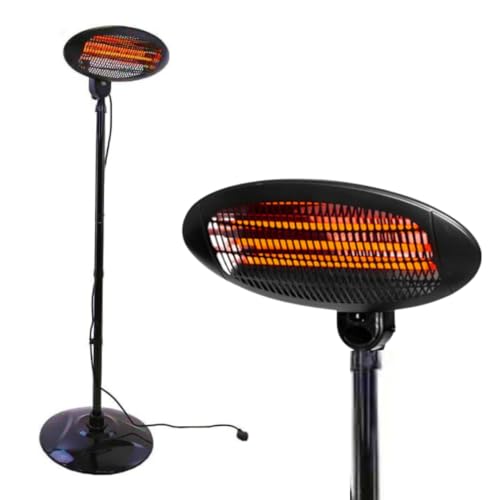10 Meetups About Patio Heat Lamp Electric You Should Attend

How to Choose a Patio Heat Lamp Electric
When it comes to heating your patio, you have many options. Electric heaters are much more convenient than propane models which require fuel refills. They can be heated immediately by pressing a button or flipping a switch.

These units also don't emit gasses that might cause health risks. Some units have adjustable heat settings to accommodate different distances.
Heater Type
You can relax outside well into the evening and throughout the seasons with the proper patio heater. Patio heaters are available in a variety of different types including freestanding propane models, natural gas models, as well as ceiling or wall-mounted electric radiant heaters. The choice you make will depend on the dimensions of your patio, current power sources, and your personal preference.
The majority of patio heaters are powered by electricity or liquid or natural gas and emit heat in convection as well as radiant heating. The heat output is measured in watts, and can be converted to British thermal units (BTUs) for comparison. Some models can be adjusted in heat settings to give you more flexibility.
A patio heat lamp combines an electric burner on a pole with a perforated metal screen that reflect the flames and sends the heat downward to warm furniture, people and other objects. Some come with a reflector atop the burner that can be plated with silver to decrease the amount of heat emitted upwards.
The most well-known type of patio heater, a gas patio heater is usually found in outdoor seating areas of bars and restaurants since they generate a lot of heat quickly and distribute it evenly in all directions -- great for warming tables. These heaters are portable and run from the propane tank or plugged into your natural gas line, with the latter providing greater convenience and lower initial cost of installation, but requiring an ongoing cost of fuel.
A growing number of homes are outfitted with natural gas lines, which makes them the ideal solution for those who prefer to use gas-powered patio heaters. They're simple to set up, but require a specialized and functioning gas line in order to function safely. There are portable natural gas heaters with extension hoses which can help overcome this restriction, but they can create a tripping hazard and a fire risk when not being used.
Safety
Electric patio heaters can be used in enclosed areas since they permit heat to radiate upwards and not outwards. They are not intended to be used under a non-protected roof. The heater must be placed at a minimum of 6" away from the ceiling, or 18" away from the adjacent wall to avoid fire hazards.
The propane and gas patio heaters are generally only suitable for use in enclosed areas with an enduring cover made for outdoor use. freestanding electric patio heater are typically made of fire-resistant fabrics and have a roof that can be closed. The safety concerns with these kinds of outdoor patio heaters are related to the flame and fumes they release. They should be placed away from items that ignite, such as curtains and chairs.
Follow the instructions and safety guidelines of the manufacturer when installing a patio heater or heat lamp. Be sure to choose one that has UL and CSA certifications. Also, read the owner's manual thoroughly. Be sure that the heater is not within the reach of pets and children. Some free-standing patio heating devices such as EUROM's come with an automatic tipping safety that shuts down the device when it falls.
If your patio heater is connected to a natural-gas line, you should examine it regularly and be sure to have it tested by a licensed professional to identify leaks. If the line requires to be replaced, be sure to hire a licensed plumber. A professional can determine if the line is properly routed or if it should be routed through an underground pipe. A professional can also ensure that the patio heater is connected to an outlet that is GFCI-rated (ground fault circuit interrupter) to safeguard against electric shocks and fires.
Installation
The height at which a patio heater is mounted affects how much heat it will radiate into the space. It is crucial that the heater be mounted at a safe distance from surfaces like plastic which can deform as well as wood, which can become too hot. Depending on the model of heater you may choose to place it on a wall or structure using conventional mounting brackets. Some models have a soft start, which lowers the current peak to safeguard your circuits.
